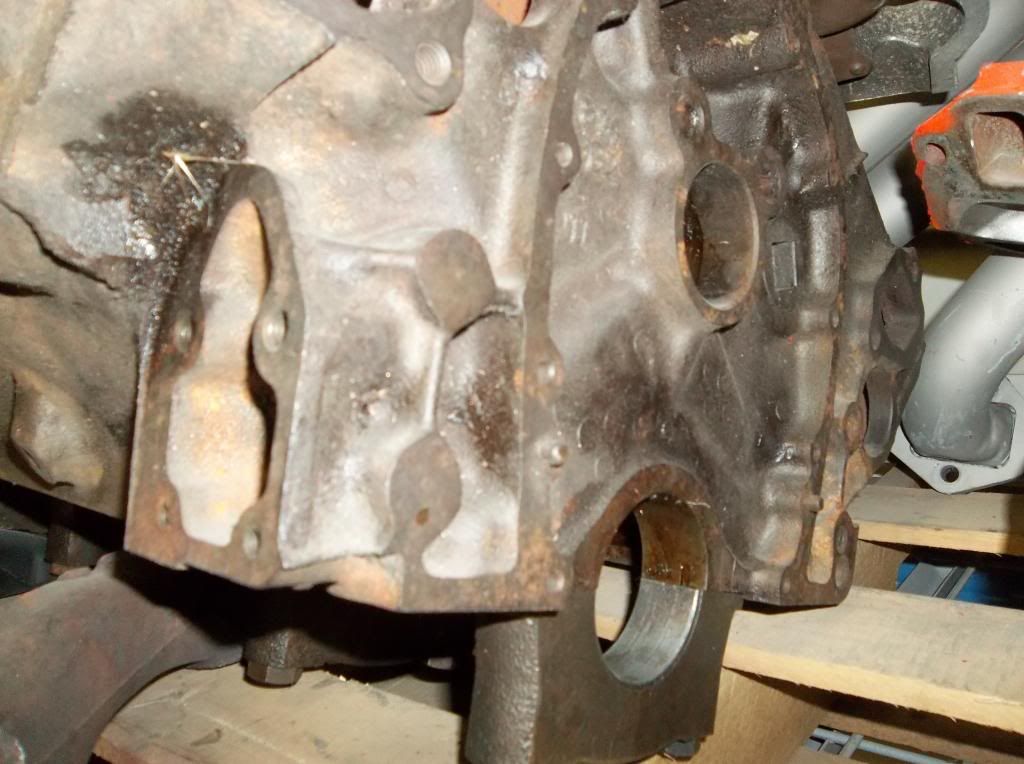This question seems to come along quite often so I thought I'd take a couple of pictures that show something to look for.
I'm not 100% sure this is foolproof but all the truck blocks I've seen have threaded holes in the bosses on the passenger side front of the block, just ahead of the fuel pump.
The truck front motor mount bolted onto the block there.
Here's a truck block...

Here's a passenger car block...

Notice that the bosses are not drilled and threaded on the passenger car block.
It could be that those bosses were drilled on replacement blocks in order to make them more universal, I don't know about that, but most of the time,,, if the bosses are drilled, it's probably a truck block.
If anybody knows more about this, please chime in.
EDIT... After reading some of the posts below you'll see that several passenger car blocks are drilled and threaded on both sides. So, you can't assume a drilled block is a truck block.
So, you can't assume a drilled block is a truck block.
It does appear that most if not all of the truck blocks are drilled on both sides so if you spot a block that is not drilled on the passengers side, it's a good bet that it's a passenger car block.
I'm not 100% sure this is foolproof but all the truck blocks I've seen have threaded holes in the bosses on the passenger side front of the block, just ahead of the fuel pump.
The truck front motor mount bolted onto the block there.
Here's a truck block...

Here's a passenger car block...

Notice that the bosses are not drilled and threaded on the passenger car block.
It could be that those bosses were drilled on replacement blocks in order to make them more universal, I don't know about that, but most of the time,,, if the bosses are drilled, it's probably a truck block.
If anybody knows more about this, please chime in.
EDIT... After reading some of the posts below you'll see that several passenger car blocks are drilled and threaded on both sides.
 So, you can't assume a drilled block is a truck block.
So, you can't assume a drilled block is a truck block.It does appear that most if not all of the truck blocks are drilled on both sides so if you spot a block that is not drilled on the passengers side, it's a good bet that it's a passenger car block.
Last edited:

 For us "little motor" guys,does same thing apply to the 348's???
For us "little motor" guys,does same thing apply to the 348's??? Especially when they think that the truck 348 or 409 they got isn't worth anything!!
Especially when they think that the truck 348 or 409 they got isn't worth anything!!